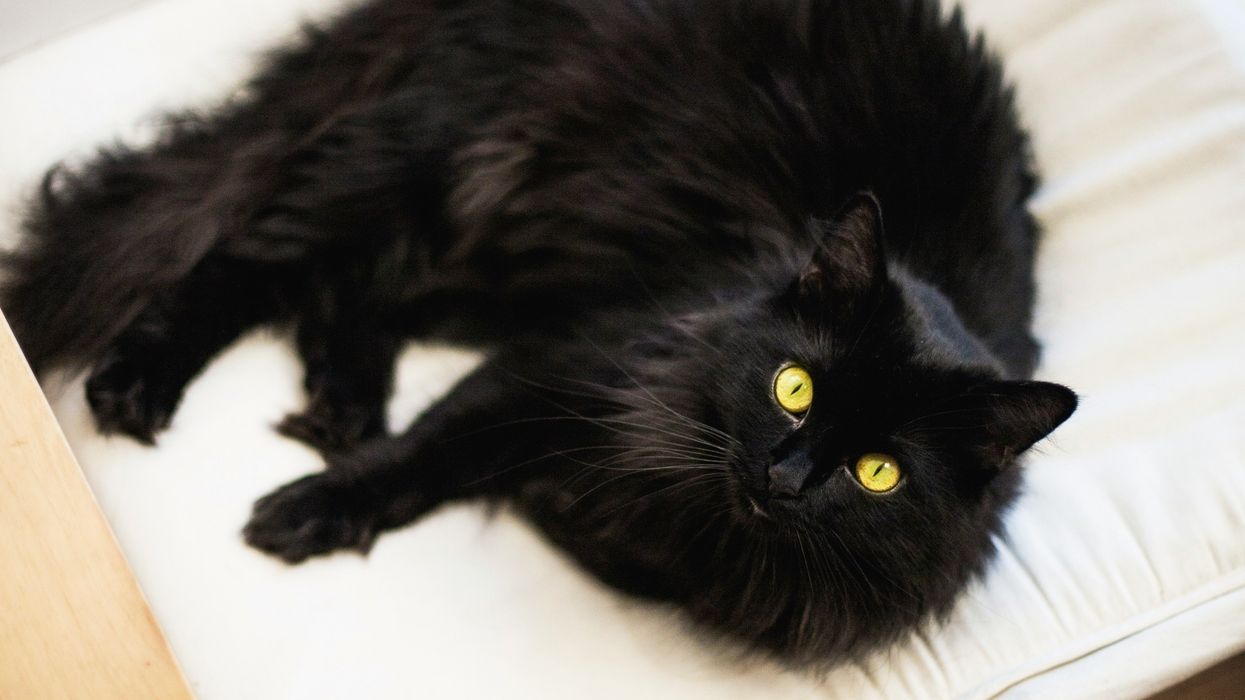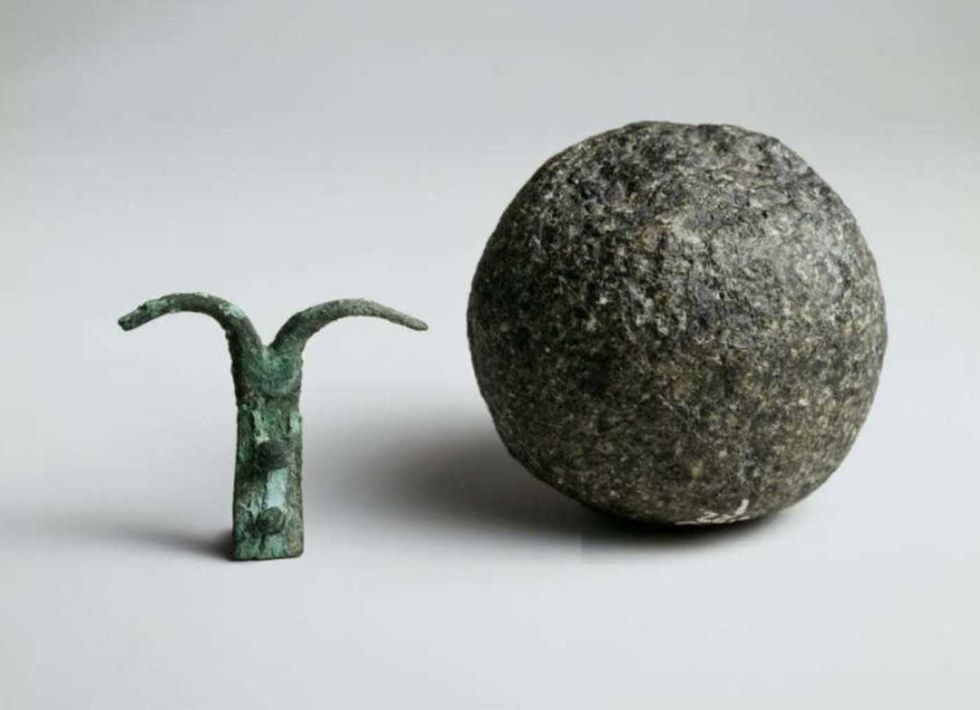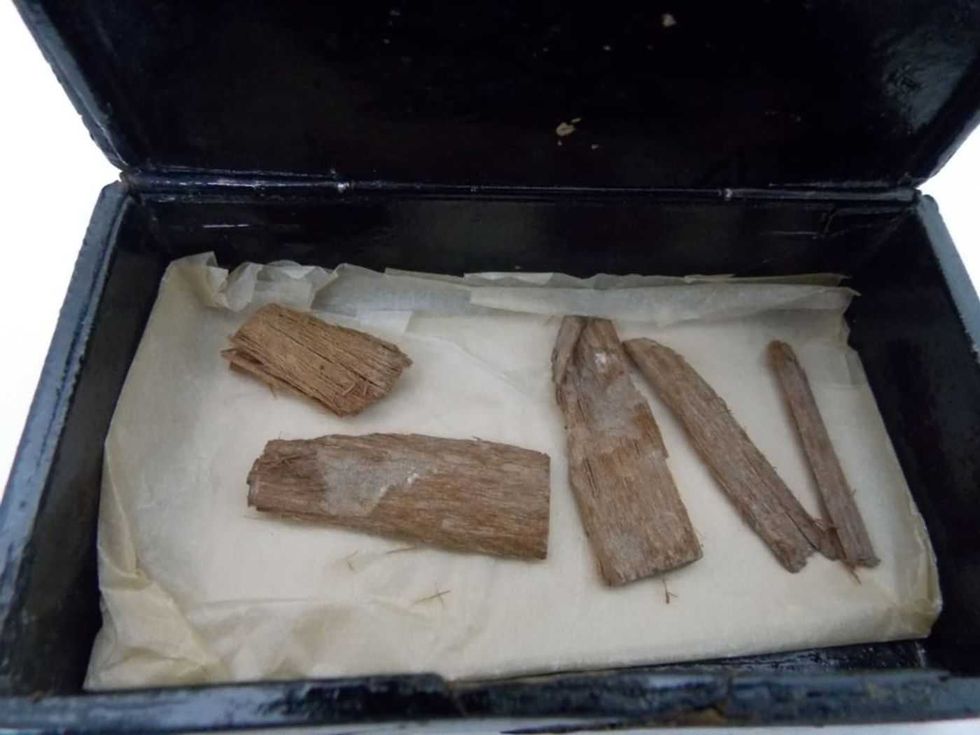When Knuckles the cat’s family adopted him, they knew he had been diagnosed with pectus excavatum, a chest compression or malformation that can cause breathing problems, and would need some extra attention. This was especially true as it pertained to weight gain–if Knuckles gained too much weight, breathing could become extremely difficult. His family knew they’d have to come up with a solution, but what they didn’t expect was that Knuckles would come up with it himself.
After Knuckles was adopted, he saw his dad take to the stationary bike in his basement for workouts. While Dad was on the bike, Knuckles developed a taste for treadmill, and now loves it so much that he even has a preferred speed of 1.4 miles per hour. For Knuckles, staying a trim feline just became that much easier, and according to his mom, he now asks to take the treadmill for a spin "six to seven times a day."
Pectus excavatum in cats can range from mild to severe, where milder symptoms “cause no appreciable respiratory distress, and require no specific treatment,” as Dr. Craig Ruaux wrote in the 2011 textbook Small Animal Pediatrics, adding that “severely affected individuals may require surgical management.” Though the disease is rare, many cats can experience both pain and danger from chest formations like those brought on by pectus excavatum and require surgery as kittens. Luckily, Knuckles was in the former, mild category, and maintaining his weight on the treadmill has kept him sprightly and sunny.
Unless the treadmill is on the wrong speed. If the treadmill is under his desired speed, even at 1.3 miles per hour, he’ll stare at the machine until it’s changed, his mom told The Dodo, and if it's above at 1.5 miles per hour he’ll hop right off. Other than that, he mews for the treadmill all day and will even use it alongside his mom and dad, as if he too knows he's keeping himself in shape.
Interestingly, cats like Knuckles may also be able to help humans one day. In hopping on the treadmill, Knuckles has also hopped on a trend of scientific testing that uses cats on treadmills to “better understand how the spinal cord works to help humans with partial spinal cord damage walk and maintain balance,” according to Georgia Tech.
As recorded in an article entitled “Sensory Perturbations From Hindlimb Cutaneous Afferents Generate Coordinated Functional Responses in All Four Limbs During Locomotion in Intact Cats,” published in the December 2022 edition of scientific journal eNeuro, in a combined study between Georgia Tech, Drexel University, and Canada’s University of Sherbrooke, cats were trained “to walk on a treadmill at a pace consistent with human gait” so their muscle and spinal responses could be understood, Georgia Tech shared. While previous similar studies had been conducted on mice, scientists believe there’s actually more of a correlation between humans and cats because the latter two “cannot maintain balance or even move if they lose sensory information about limb motion,” where mice can. As the study continues, scientists’ findings could potentially help them understand how to better help humans with spinal issues in the future.


















 Two people study a mapCanva
Two people study a mapCanva Foggy Chinese villageCanva
Foggy Chinese villageCanva

 An excerpt of the faxCanva
An excerpt of the faxCanva
 Robert Redford advocating against the demolition of Santa Monica Pier while filming "The Sting" 1973
Robert Redford advocating against the demolition of Santa Monica Pier while filming "The Sting" 1973


 A woman looks out on the waterCanva
A woman looks out on the waterCanva A couple sits in uncomfortable silenceCanva
A couple sits in uncomfortable silenceCanva Gif of woman saying "I won't be bound to any man." via
Gif of woman saying "I won't be bound to any man." via  Woman working late at nightCanva
Woman working late at nightCanva Gif of woman saying "Happy. Independent. Feminine." via
Gif of woman saying "Happy. Independent. Feminine." via 
 Pyramid of Khufu
Pyramid of Khufu A spherical dolerite pounder.
A spherical dolerite pounder. Abeer Eladany holds open the box of splinters
Abeer Eladany holds open the box of splinters The box that the missing piece of cedar was discovered
The box that the missing piece of cedar was discovered The wooden fragments dated to around 3341-3094 BC
The wooden fragments dated to around 3341-3094 BC